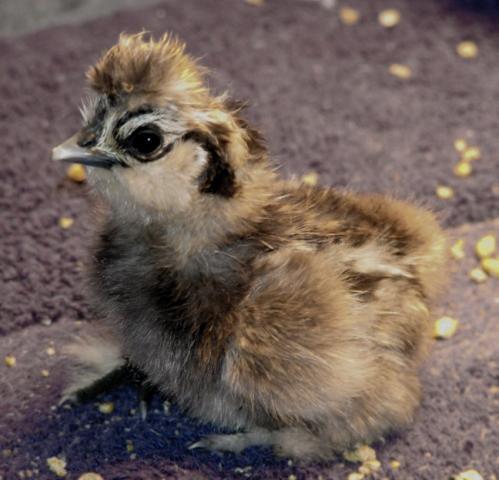Quote:
This is probably way too late to respond to, but I am a professional artist and understanding color is part of my work. Here is a color chart http://www.bing.com/images/search?q...3E6B788AA390FF2FF9DEABD71B344D862622D&first=0 You can chose the color in your silkie that you most want to highlight and then look at the exact opposite color on the chart. That would be the background that would best show off your bird. You might want to tone it down a bit by chosing a color near by. An example of opposite color use would be the orange thread used in most blue denim jeans.

I am in the graphics business and peepblessed is absolutely correct that picking an opposite complementary color background will give the most contrast. That's why white Silkies really "pop" off of a black background. It is because the opposite of white is black.
http://i91.photobucket.com/albums/k304/racuda00/Silkies/White Silkies/thirteen4-1.jpg
However, there is the matter of aesthetics. While the opposite color of a partridge Silke may be some shade of aqua, I think the effect is somewhat garish. Others may disagree.
(not my bird)http://silkiesforsale.com/images/Partridge RoosterSmall.jpg
I'm afraid I agree with your husband that a white background may be a better choice. With white, your bird can be the "rainbow", without having to compete with a too colorful background.
If the aqua was muted or dulled, I believe it would work. Other wise the background is competing with the foreground...

This is probably way too late to respond to, but I am a professional artist and understanding color is part of my work. Here is a color chart http://www.bing.com/images/search?q...3E6B788AA390FF2FF9DEABD71B344D862622D&first=0 You can chose the color in your silkie that you most want to highlight and then look at the exact opposite color on the chart. That would be the background that would best show off your bird. You might want to tone it down a bit by chosing a color near by. An example of opposite color use would be the orange thread used in most blue denim jeans.

I am in the graphics business and peepblessed is absolutely correct that picking an opposite complementary color background will give the most contrast. That's why white Silkies really "pop" off of a black background. It is because the opposite of white is black.
http://i91.photobucket.com/albums/k304/racuda00/Silkies/White Silkies/thirteen4-1.jpg
However, there is the matter of aesthetics. While the opposite color of a partridge Silke may be some shade of aqua, I think the effect is somewhat garish. Others may disagree.
(not my bird)http://silkiesforsale.com/images/Partridge RoosterSmall.jpg
I'm afraid I agree with your husband that a white background may be a better choice. With white, your bird can be the "rainbow", without having to compete with a too colorful background.
If the aqua was muted or dulled, I believe it would work. Other wise the background is competing with the foreground...









